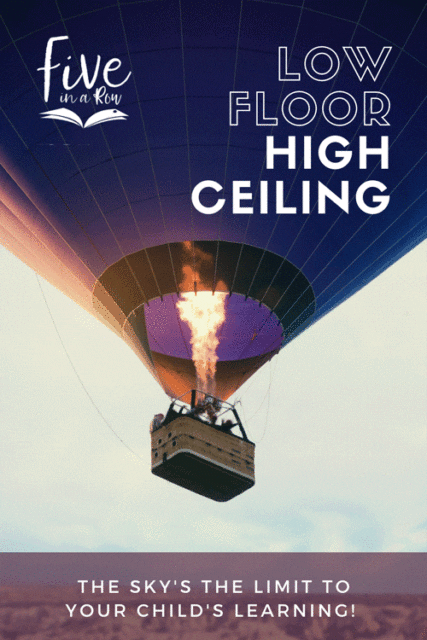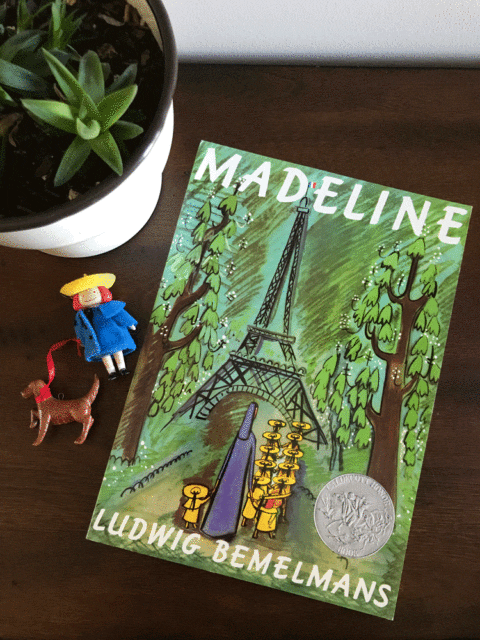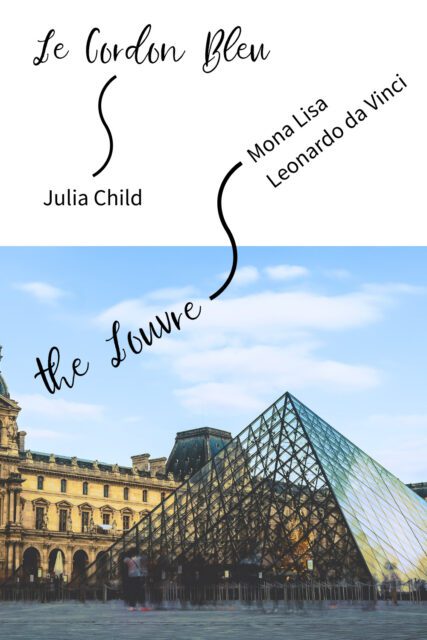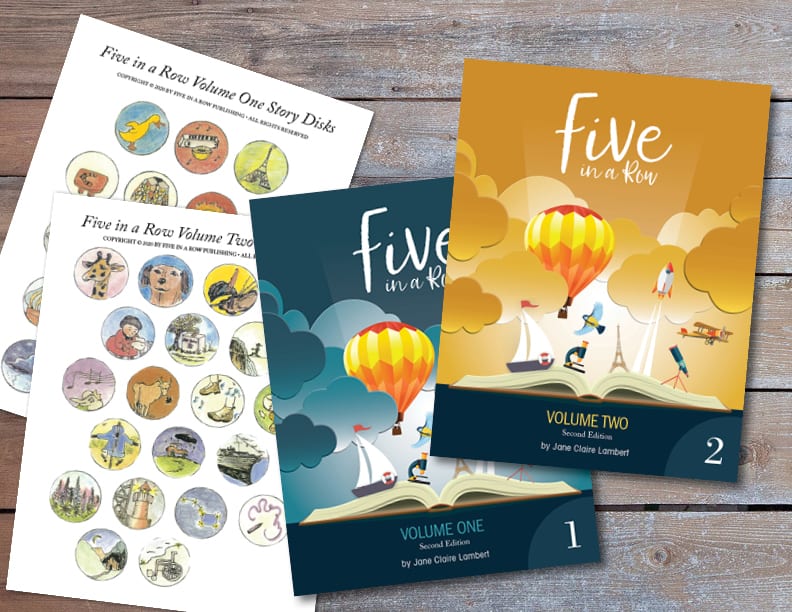We’d love to explain a learning philosophy called low floor/high ceiling that Five in a Row utilizes to provide each student a specialized education that not only inspires them to learn but allows for unlimited learning potential! The sky’s the limit to your child’s education.

Get Your FREE Five in a Row Sample Unit at the end of this post. Try it for yourself and watch your child fly!
By introducing your student to a large range of topics in each subject, you provide a foundation for them to build upon. It’s like a buffet they’re getting a complete balanced meal (or education) by selecting foods to taste but can go back for seconds, and thirds for what they love! When a topic sparks their interest, that’s your cue to help them find additional resources so that they can dig as deeply as they desire.
Five in a Row is based on a learning concept referred to as low floor/high ceiling. You present topics and information in a way (picture books and simple discussion-based lessons) through which anyone including a toddler or non-verbal student can engage and enter into learning (that is the low floor).
Then, by completing the lessons and assignments in the manual, you’re mid-level, (or grade level if you will) and by adding additional resources (if the interest and desire are there) you can scale the lesson as high as you want to or your child’s comprehension allows.
For instance, in the Five in a Row unit based on Madeline, you can discuss that the story takes place in Paris, France. You’ll point out the Eiffel Tower in the illustration and talk about it being a famous landmark that represents Paris, France. Then you’ll place the Story Disk on a world map on Paris, France. After reviewing and mentioning this a few times during the week, likely even a two-year-old listening in would surprise you by remembering something from the lesson. And your 5-9 year old using the curriculum will likely be able to find Paris, France on the world map by themselves and remember the name of the famous landmark located there.

Everything below this paragraph is considered high ceiling because you are adding to the lessons in the manual…going beyond the grade level scope and sequence that is provided for you and technically, all you need. This is for interest-led learning, NOT something you should be adding to every topic or lesson. This is led by your student’s interest and questions (as I mention again later).
If a student is interested in history or science you could springboard off this geography lesson and talk about the fact that the Eiffel Tower was built in 1889. What else was happening in France, America (or other parts of the world) in 1889? A quick google search on America in 1889 shows that the Cocoa-Cola Company is founded, Benjamin Harrison became the 23rd president, and four new states were founded (North Dakota, South Dakota, Montana, and Washington)–the list goes on and on.
For science, you could research what the Eiffel Tower is made of…iron. Iron is a chemical element with symbol Fe (from Latin: Ferrum) and atomic number 26. This presents the chance to introduce the periodic table of elements. Or to discuss why so many scientific things (plant and animal names for example) are in Latin: “The scientific naming system for animals and plants was systematized by the 18th-century Swedish naturalist Carl von Linné, better known as Carl Linnaeus. He created the hierarchical system of grouping animals and plants and used Latin and Greek names for the groups because these were the international languages of science at the time.” (this was pulled from a BBC science article that came up when I googled, “why are plant and animal names in Latin?”

Hopefully, these examples help to explain the high ceiling concept behind letting your child’s interest lead their learning and why Five in a Row will be enough for even advanced students in geography, history, language arts, art, or science. The sky’s the limit to your child’s education when you allow for interest-led learning!
To some, the rabbit hole (or interest-led learning) that I just took you through … from Paris, France, and the Eiffel Tower all the way to the periodic table, scientific Latin names, and the founding of the Cocoa-Cola Company in the United States sounds complicated. It sounds like extra work (beyond an open-and-go curriculum that you assign to your child and check off the list when they turn in the worksheet or test).
I promise, it’s not complicated or hard … the rabbit hole that you and your student go through is based on your child’s interest and questions! All you have to do is be willing to research additional information (books, websites, videos) or teach them how to research and find answers to their questions. This not only provides the entire world at their fingertips to learn from, but it provides the information that they are excited about which is how we all learn best and retain what we learn.
You could teach all the same things I mentioned in the interest-led learning scenario to a child that didn’t ask those questions or have any interest in them and they likely wouldn’t retain the information.
Perhaps their questions and interest would have been based on art and cooking. In which case you might have been led down a trail and studied the Louvre and the famous artwork it contains, the artists that created some of the most famous pieces there (the Mona Lisa and Leonardo da Vinci) and then moved on to cooking. Le Cordon Bleu, the famous cooking school in Paris, France, might have come up or one of its famous American students, Julia Child. You could get picturebooks (Minette’s Feast and others) about Julia Child and watch one of her cooking shows together.

We are passionate about this type of learning. This post explains why we believe Five in a Row provides an amazing education from ages 2 -12 to those willing to follow the manual and then help their student follow their interests as far as they desire!
If you found this blog post enlightening or encouraging, please share it with a friend!

Grab a FREE sample of Five in a Row to try interest-led, low floor / high ceiling learning with your child today! https://fiveinarow.com/five-in-a-row/



 How to Use Stories to Reduce Stress
How to Use Stories to Reduce Stress
Bonjour, by reading the post I just realized I was doing this philosophy, didn’t know it had a name! I am very interested to know more!